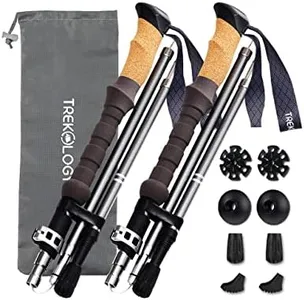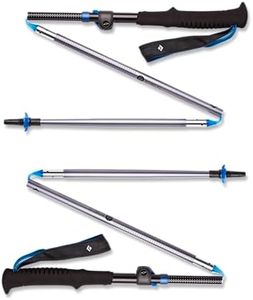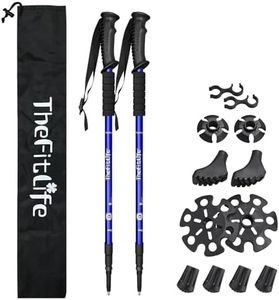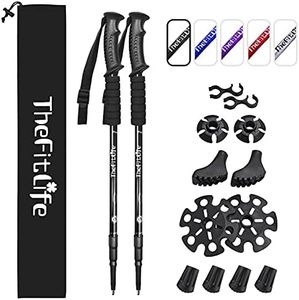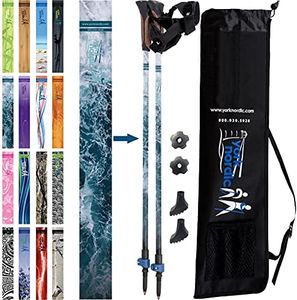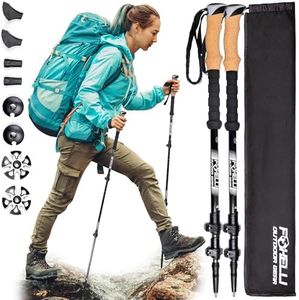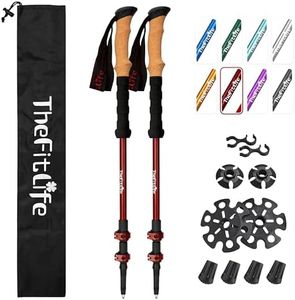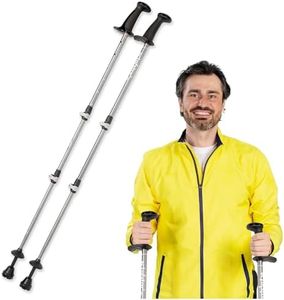We Use CookiesWe use cookies to enhance the security, performance,
functionality and for analytical and promotional activities. By continuing to browse this site you
are agreeing to our privacy policy
10 Best Nordic Walking Stick
From leading brands and best sellers available on the web.Buying Guide for the Best Nordic Walking Stick
Choosing the right Nordic walking stick is all about matching your stick to your physical needs and walking style. Nordic walking sticks enhance stability, engage your upper body, and can help you walk longer distances more comfortably. To find a model that feels natural and supportive, pay attention to the main features and consider where and how you plan to walk most often, as well as your fitness goals. Comfortable use and correct sizing are crucial, so knowing how to pick the right specs will help you get the most out of your Nordic walking experience.Stick LengthThe length of a Nordic walking stick determines your walking posture and efficiency. Too short or too long, and you might strain your wrists, shoulders, or back. Stick lengths are often calculated as about 68% of your height, or by multiplying your height in centimeters by 0.68. Adjustable sticks give flexibility, which is great for sharing between people or for those still learning their ideal length, while fixed-length sticks can be lighter and slightly more durable. If you’re new or want versatility for different terrains, adjustable is a safe bet; for experienced users who know their size and want a bit less weight, fixed-length could be preferable.
MaterialThe material of your Nordic walking stick affects its weight, durability, and vibration absorption. Common materials include aluminum, carbon fiber, or blends. Aluminum sticks are sturdy, durable, and affordable, but can be heavier and transfer more vibrations. Carbon fiber models are lighter and absorb shocks better, which is helpful for longer or more vigorous walks, though they’re usually more expensive. Pick aluminum if you’re just starting out or expect rough handling; go for carbon fiber if you plan regular use, want less fatigue, or have sensitive joints.
Grip/Handle TypeThe grip is where you hold the stick and affects both comfort and control. Grips are usually made from cork, rubber, or foam. Cork is comfortable, absorbs sweat, and adjusts to your hand shape over time, but can wear down. Rubber grips offer good control and grip especially in wet conditions, but may cause sweaty hands. Foam is lightweight and soft but can wear out quicker. Choose cork for long walks and dry conditions, rubber for wet or variable weather, and foam if you’re after lightweight comfort for shorter outings.
Strap SystemStraps attach your hand securely to the stick to help with proper Nordic walking technique and reduce hand fatigue. Some straps are glove-like for extra support, while others are simple loops. Glove straps provide more control and reduce the risk of blisters, making them ideal for frequent or long-distance users, while basic loops are easy to use and suit short or casual walks. Pick a strap system that feels comfortable, secure, and easy to adjust to your hand size.
Tip TypeThe tip is the part of the stick that touches the ground. Nordic walking sticks typically come with durable metal tips for natural surfaces like dirt or gravel, and removable rubber tips for walking on pavement. Metal tips grip trails well and withstand wear, while rubber tips protect both your stick and hard surfaces for urban environments. Consider what surfaces you’ll walk on most—if it’s a mix, look for sticks that offer both options and easy tip changes.
WeightWeight influences how tiring it is to use your Nordic walking sticks over time. Lighter sticks are easier to swing and help you maintain a brisk, comfortable pace, especially on longer outings. Heavier sticks might suit people seeking a bit more resistance for extra upper-body exercise or those who value durability above all. Think about your strength, endurance, and walk duration: lightweight is best for most users and for covering distance, while slightly heavier might be fine for gentle walks or fitness use.
